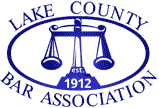| Personal Injury |
Business Law |
Real Estate Law |
Wills, Trusts & Probate |
General Civil Litigation |
Elder Law |
Tax Credits For Historic Preservation
For over 25 years the federal Government has been using tax incentives to help preserve historic buildings. Today, there is a general business credit equal to 20% of qualified rehabilitation expenses for a certified historic structure, or a 10% tax credit for the qualified rehabilitation of nonhistoric, nonresidential buildings first placed into service before 1936. Eligibility for the tax incentives is determined by the National Park Service. Tax credits are often more beneficial to taxpayers than deductions, since every dollar of a tax credit reduces the amount of income tax owed by one dollar.
The 20% credit for the rehabilitation of a certified historic structure applies to commercial, industrial, agricultural, rental, or residential properties, but not properties used exclusively as the owner's private residence. A certified historic structure must be a building, as opposed to another type of structure. To have the required historic status, the building must be either listed individually in the National Register of Historic Places or located in a registered historic district and certified as being of historic significance to the district.
Eligibility for the 20% credit also depends on meeting some additional requirements. For example, the building must be depreciable, that is, used in a trade or business or held to produce income. The rehabilitation must be substantial, generally defined as entailing expenditures over a two-year period exceeding the greater of $5,000 or the adjusted basis of the building and its structural components. Qualified rehabilitation expenses include such items as architectural and engineering fees, site survey and development fees, legal expenses, and other construction-related costs, so long as they are added to the basis of the property, are reasonable, and are related to services performed.
The owner of the rehabilitated building must hold it for five years after completion of the rehabilitation, or pay back all or part of the 20% credit. A sale in the first year means that the entire credit is recaptured. The recapture amount is reduced by 20% per year for properties held between one and five years.
The 10% credit for nonhistoric buildings constructed before 1936 shares some of the requirements for the 20% credit, such as that the rehabilitation be substantial and the property be depreciable. However, only buildings rehabilitated for nonresidential uses qualify for the 10% credit. In addition, so that the identity of the original building is not lost in the process, projects undertaken for the 10% credit must meet specific tests based on retention of minimum percentages of the building's walls and internal structural framework.
This website is not intended to constitute legal advice or the provision of legal services. By posting and/or maintaining the website and its contents, Lucas Law does not intend to solicit business from clients located in states or jurisdictions outside of Illinois wherein Lucas Law or its individual attorney(s) are not licensed or authorized to practice law.















